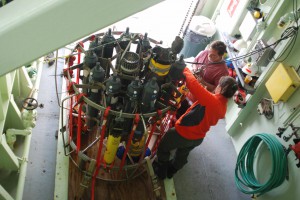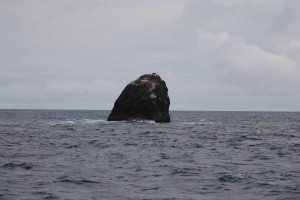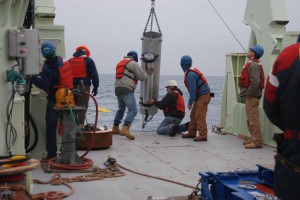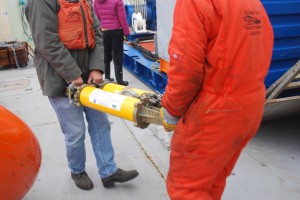On Saturday, we reached the eastern-most point of this expedition, just a few 10s of miles off the western coast of Scotland. We could almost hear the bagpipes ! Our Scottish colleagues, led by OSNAP principal investigator Stuart Cunningham, deployed the last of the moorings–a trawl-resistant frame with an acoustic Doppler current profiler, or ADCP, inside. This frame is like a protected cave for the ADCP. the top face has sloping sides so that when a fishing trawl runs into it, the trawl should just roll up and over the frame. The instrument stays in place and the fishers get their nets back intact. Everyone is happy. The ADCP meanwhile sends acoustic pings upward every three minutes, and from the Doppler (frequency) shift of the return echos, the speed and direction of the currents at all depths from the sea bottom (at 400 meters) up to the sea surface can be determined. The data are stored inside the instrument for a year, after which Stuart and his team will retrieve it and replace it with a new instrument that will monitor the currents for the second year.
This talk about data storage reminds me that what we are doing on this cruise is making an investment for a better understanding of the long-term climate of our one and only planet, Earth. Read More→





